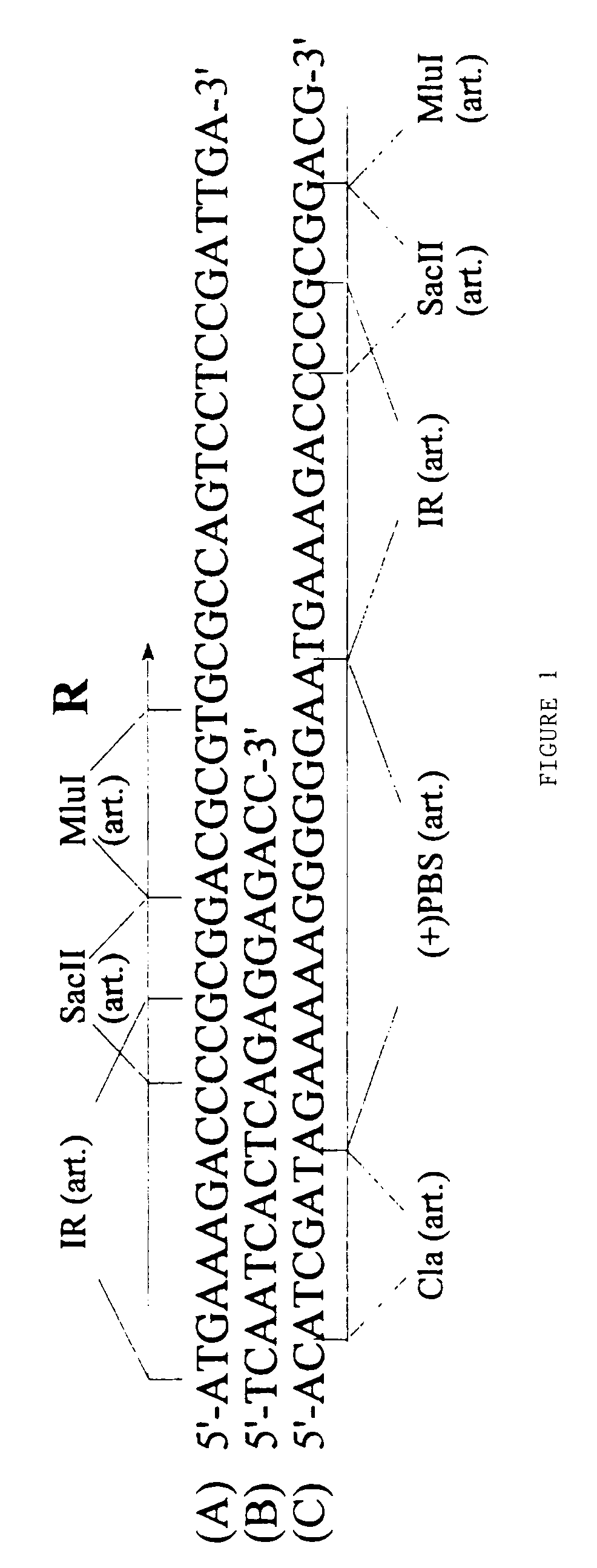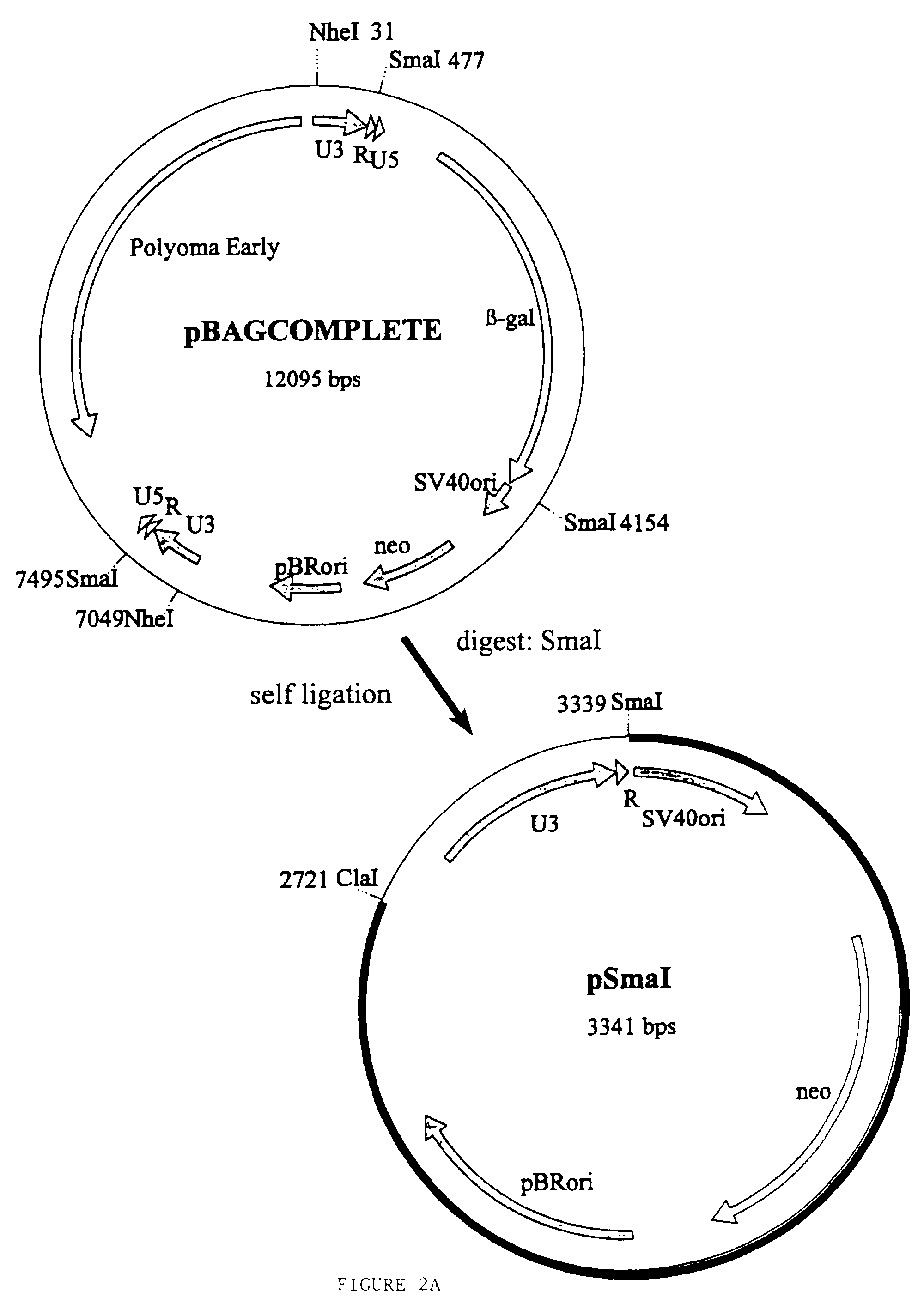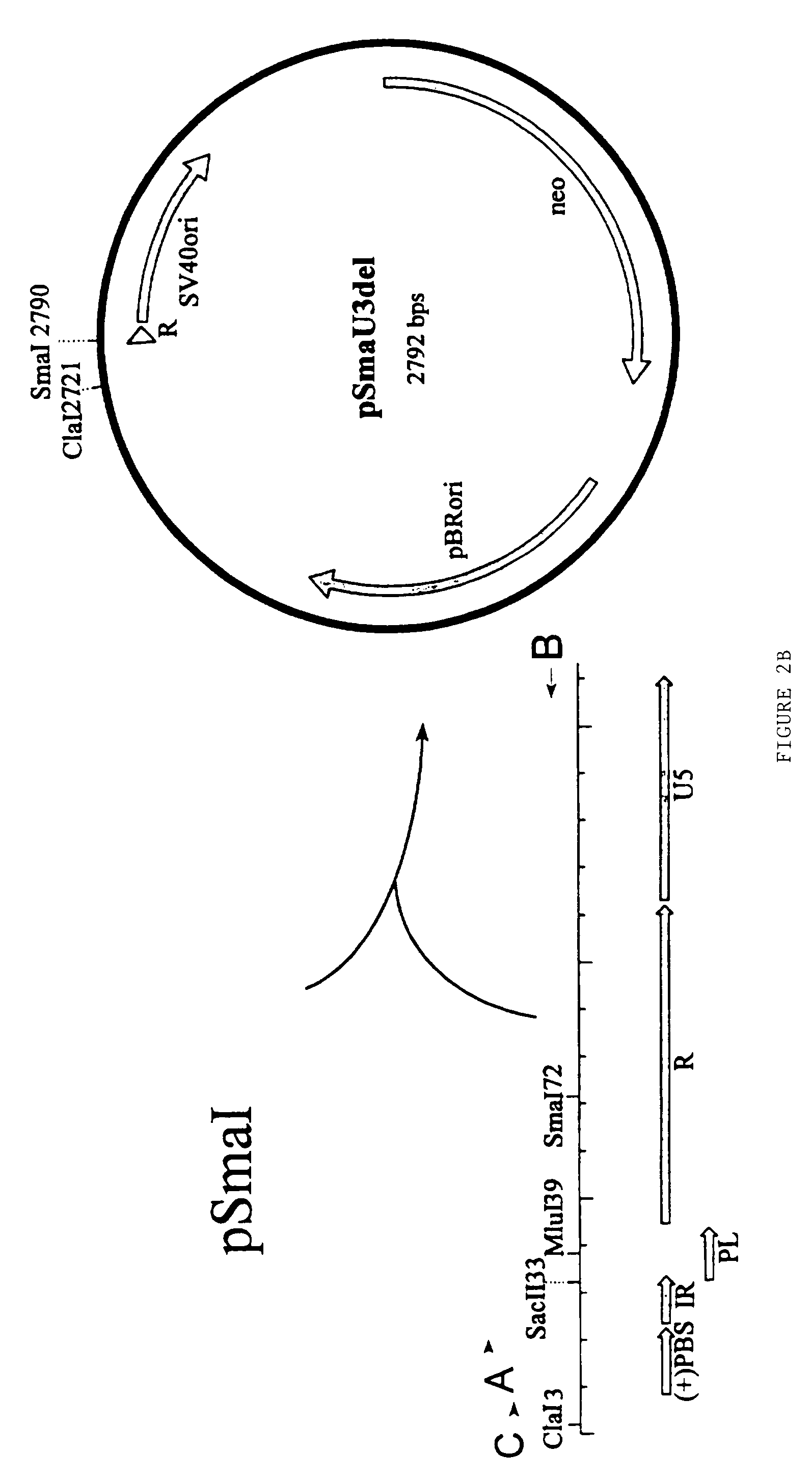Retroviral vectors carrying senescent cell derived inhibitors 1 (SDI-1)or antisense SDI-1 nucleotide sequences
- Summary
- Abstract
- Description
- Claims
- Application Information
AI Technical Summary
Benefits of technology
Problems solved by technology
Method used
Image
Examples
example 1
Deletion of the U3 Region and Insertion of a Polylinker
[0120]In the numeric leukemia virus (MLV) retroviral vector known as BAG the β-galactosidase gene is driven by the promiscuous (i.e. non-tissue specific) MLV promoter in the U3 region of the LTR. According to the present invention a derivative of the BAG vector has been constructed in which the MLV promoter (U3) located within the 3′LTR except the inverted repeat has been deleted by PCR and replaced by a polylinker. The BAG vector lacking the U3 is expressed from the MLV promoter (U3) within the 5′LTR when introduced into a package cell line. As a result of the rearrangements occurring in the retroviral genome during its life cycle, following infection of its target cell, the polylinker will be duplicated at both ends of the retroviral genome as described in WO-Al-9607748. Thereby a retroviral vector can be constructed in which the expression of the β-galactosidase gene of BAG will be controlled by any heterologous promoter inse...
example 2
Cloning of pMMTV Gal
[0124]the Mouse Mammary Tumour Virus (MMTV) U3-Region (mtv-2) without the inverted repeats including a region that confers responsiveness to glucocorticoid hormones and a region containing an element that directs expression to the mammary gland was inserted into pCON6.
[0125]The U3 region of MMTV was amplified by PCR using the plasmid pBG102 (a plasmid containing the 3′LTR from mtv 2) as a template with primers D and E. The 3′ end of primer D is complementary to the 5′ end of the MMTV U3 region and carries a SacI site in its 5′ extension (FIG. 5). The 3′ end of primer E is complementary to the 3′ end of the MMTV U3 region and has a MluI site in its 5′0 extension (FIG. 5).
[0126]After 35 cycles of annealing at 49° C. and extension at 72° C., a 1229 bp product was obtained, digested with SacI and MluI and ligated to the SacI / MluI digested vector pCON6. The resulting plasmid p125.6 (5305 bp) (FIGS. 4A–4B) was digested with XhaI and HindIII and the 4187 bp fragment lig...
example 3
Construction of ProCon SDI Retroviral Vector
[0127]The human SDI-1 CDNA carried in the plasmid PSDII (Noda, A., et al., Exp. Cell. Res., 211:90–98 (1994)) was isolated by PCR using two primers. SDln1:5′-TATGGACGTCTCCCTGCCGAAGTCAGTT-3′ (SEQ ID NO:6) and SDln2: 5′-TATGGGATCCGGCAGAAGATGTAGAGCG-3′ (SEQ ID NO:7), carrying BamHI and AatII restriction sites (bold sequences) as extensions. The plasmid pMMTVBAG was digested with datII and BamHI (FIG. 7). The resulting 5 kb vector containing fragment was ligated to the SDI fragment, creating the plasmid p125.SD1 (FIG. 7). In order to extend the retroviral packaging signal, p125.SDI was digested with AatII and AftII and the resulting 4.9 kb fragment was blunt ended and ligated to a 3.5 kb blunt ended EcoRI / 4AflIII fragment of pLXSN (Miller, A. D., & Rosman, G. J., Biotechniques, 7:980–990 (1989)), giving the plasmid pLXS-SDH (FIG. 7).
PUM
| Property | Measurement | Unit |
|---|---|---|
| Composition | aaaaa | aaaaa |
Abstract
Description
Claims
Application Information
 Login to View More
Login to View More - R&D
- Intellectual Property
- Life Sciences
- Materials
- Tech Scout
- Unparalleled Data Quality
- Higher Quality Content
- 60% Fewer Hallucinations
Browse by: Latest US Patents, China's latest patents, Technical Efficacy Thesaurus, Application Domain, Technology Topic, Popular Technical Reports.
© 2025 PatSnap. All rights reserved.Legal|Privacy policy|Modern Slavery Act Transparency Statement|Sitemap|About US| Contact US: help@patsnap.com



